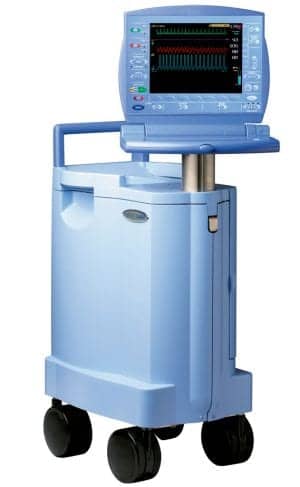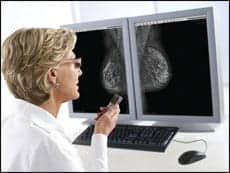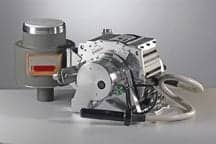The last couple of “ICC Prep” articles have focused on networking and preparing for the exam. This article will get back to the more traditional, technical side of the exam and will explore a medical device known as a balloon pump and some complications associated with this cardiac therapy.
The technical term for a balloon pump is an intra-aortic balloon pump (IABP). The ICC CBET exam will probably refer to this device as an IABP. The clinical purpose of IABPs is to increase the perfusion of oxygen in the myocardium while also increasing cardiac output. This device accomplishes this action by inflating and deflating a small balloon in the aorta. The size of the IABP balloon is usually in the range of 25 to 50 mL for adults and is attached to the distal end of an 8.0 to 9.5 French catheter. Smaller catheters and balloons are used for pediatric patients. The size of the balloon used in IABP therapy is determined by the patient’s height and should not exceed 80% to 90% of the diameter of the patient’s descending thoracic aorta.
The balloon is usually inflated with helium, as this gas has a low viscosity and travels well in the connecting tubing. In addition, if a balloon rupture were to occur, helium is less likely to cause an embolism. The action of inflating and deflating the balloon is referred to as counter pulsating and will likely be mentioned this way on the exam.
IABPs are programmed to identify a trigger for balloon inflation and deflation. The most commonly used triggers are the ECG waveform and the systemic arterial pressure waveform. The balloon inflates with the onset of diastole, which corresponds with the middle of the T-wave. The balloon deflates at the onset of systole, which corresponds to the peak of the R-wave.
BMET/CE staff, along with the medical staff, must be cognizant of poor ECG quality, electrical interference, and cardiac arrhythmias that can result in erratic balloon inflation. When the unit deflates the balloon, an increase in blood flow is obtained by reducing what is known as cardiac afterload. Cardiac afterload, in its most basic definition, is the amount of resistance the heart has to overcome to eject blood, so you can think of afterload as ejection of blood from the heart.
When the unit inflates the balloon during diastole, blood flow increases to the coronary arteries, which increase oxygenation to the myocardium. This action is referred to as cardiac preload. Think of preload as the amount of blood returning to the right side of the heart after systemic circulation. The central venous pressure—or CVP—measures this, while preload of the left side of the heart is measured with pulmonary capillary wedge pressure, or PCWP. In essence, the actions of an IABP will decrease demand for oxygenation of the myocardium and increase the oxygen supply to the myocardium. For the exam, this may be the most important factor to remember, and maybe that helium is used to inflate the balloon.

Poor ECG quality, electrical interference, and cardiac arrhythmias can result in erratic balloon inflation.
REASONS FOR USE
You must also prepare yourself by understanding why this device is used. It is used in cases of severe angina, of which there are three types: stable, unstable, and variant. Unstable, the most dangerous, is a good indicator that the patient may have a myocardial infarction (MI) at any time. Angina is discomfort or pain in the areas of the chest, jaw, shoulders, arms, or neck. It can feel like indigestion, and it is usually caused by poor perfusion of blood into the myocardium. Angina is a symptom of coronary artery disease (CAD), usually brought on by plaque buildup in coronary arteries. The coronary arteries are the blood vessels that feed the myocardium, and the plaque buildup restricts blood flow.
IABP therapy is used in certain patients before or after open-heart surgery. This therapy allows the heart not to have to work as hard and can assist the healing process after surgery. This therapy is also used to treat patients in emergencies such as heart attack or congestive heart failure, or for patients waiting for a heart transplant. This therapy assists the heart and can provide time for a donor heart to be harvested.
IABP catheters are usually installed through the femoral artery in the cath lab, but the procedure can be performed in the OR and in the ICU departments within the medical facility. Alternative routes of access include subclavian, axillary, brachial, or iliac arteries. This type of cardiac therapy is usually performed for a few days, unless the patient is waiting on a donor heart, which may extend this therapy.
VARIOUS COMPLICATIONS
Some complications from this type of therapy, as mentioned earlier, consist of improper timing of inflation and deflation of the balloon, which will result in instability of the hemodynamic pressures. Timing between inflation and deflation and the cardiac cycle is critical in IABP therapy. When the balloon is inflated before the aortic valve closes or markedly after the aortic valve closes, we consider these two conditions as early inflation and late inflation, respectively.
Early deflation of the balloon is when the balloon deflates during the diastolic phase of the cardiac cycle, and late deflation occurs when the balloon is deflated after the onset of the systolic phase of the cardiac cycle.
Again, these conditions are usually related to a poor ECG signal or poor arterial blood pressure waveforms. These complications are closely related to biomedical/clinical engineering departments. Other complications, such as arterial perforation, aortic perforation, and limp ischemia, are usually associated with improper placement of the balloon during IABP therapy.
This information may be very valuable to you as you prepare for the exam as you may run into questions about IABP therapy. Until next time, keep studying!
John Noblitt, MAEd, CBET, is the BMET program director at Caldwell Community College and Technical Institute, Hudson, NC. For more information, contact
REVIEW Q&A
- The inflation and deflation of an intra-aortic balloon pump is referred to as____?
- On/off time
- Inflation/deflation
- Pressure operation
- Counter pulsating
- The balloon in IABP therapy uses with what type of gas?
- Oxygen
- Carbon dioxide
- Helium
- Argon
- Balloon inflation during IABP therapy occurs during which part of the cardiac cycle?
- Diastolic
- Systolic
- Either
- Neither
- IABP therapy may be used for which medical condition?
- After cardiac surgery
- Before cardiac surgery
- Congestive heart failure
- All of the above
See the answer
See the answer
See the answer
See the answer





